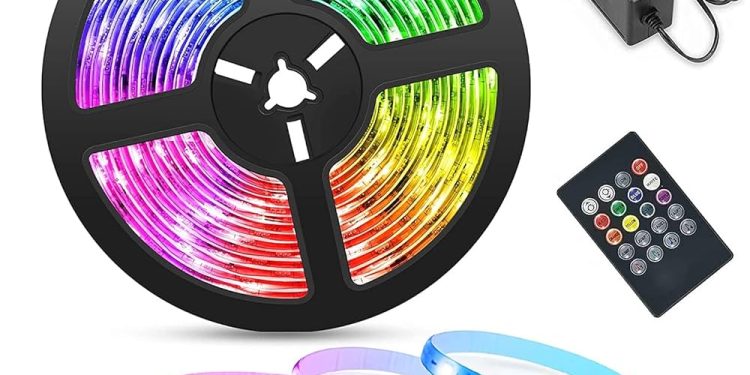Exploring Innovations in LED Lighting: From Strip Lights to LED Modules

In recent years, LED lighting has revolutionized the way we illuminate spaces from homes and offices to commercial settings and outdoor environments. The technology behind LEDs (light-emitting diodes) offers significant advantages in energy efficiency, durability, and design flexibility. Among the popular options within the LED world are LED strip lights and LED modules, each serving different purposes and offering unique benefits. Understanding these products and their applications helps in choosing the right lighting solution for various needs.
Introduction to LED Lighting Technology
LEDs are semiconductor devices that convert electricity into light. Unlike traditional incandescent or fluorescent bulbs, LEDs use less power, last longer, and generate less heat. This shift toward LED lighting is driven by growing interest in sustainable and cost-effective solutions, making LEDs a preferred choice worldwide.
What makes LED lighting stand out is not only its efficiency but also its adaptability. It comes in many forms from bulbs to panels, strips to modules allowing designers and consumers to create innovative lighting effects tailored to different environments.
Understanding LED Strip Lights
LED strip lights are flexible circuit boards populated with small LED chips that emit light. Their flexibility allows them to be installed in creative ways around corners, under cabinets, or along architectural features. This versatility has made LED strip lights a favorite in both residential and commercial applications.
Common uses include accent lighting, backlighting for TVs or displays, and mood lighting in living rooms or restaurants. They are also popular in retail spaces where color and brightness adjustments can enhance product displays.
One of the major advantages of LED strip lights is their ease of installation and ability to be cut to custom lengths. Different types offer varying brightness levels and color options, including single-color, RGB (color-changing), and tunable white varieties.
Role of LED Strip Lights Manufacturer
Behind every quality LED strip light is a led strip lights manufacturer focused on creating durable and high-performance products. These manufacturers design LED strips to withstand environmental factors such as moisture and temperature fluctuations, ensuring longevity and reliability.
Advanced manufacturing processes contribute to improved heat dissipation and consistent light output, while innovations such as smart controls make these products adaptable to modern lighting needs. The balance between cost-efficiency, quality, and innovation defines the work of a successful LED strip lights manufacturer.
Introduction to LED Modules
While LED strip lights offer flexibility, the led module presents a different approach to LED lighting. LED modules consist of clusters of LEDs mounted on a rigid circuit board, often including lenses or diffusers to shape light distribution effectively.
These modules find widespread use in signage, architectural lighting, and automotive applications due to their brightness and directional lighting capabilities. Their sturdy design suits environments where a consistent and focused light source is essential.
Technical Aspects of LED Modules
LED modules are engineered to provide reliable performance and consistent illumination. Protective materials safeguard the LEDs from dust, moisture, and mechanical stress, which is especially important for outdoor or industrial applications.
Energy efficiency paired with high brightness makes LED modules suitable for outdoor signs and displays requiring visibility even in daylight. Innovations in heat management and optics have further enhanced their lifespan and light quality, ensuring these modules meet demanding requirements.
Choosing Between LED Strip Lights and LED Modules
Selecting between LED strip lights and LED modules depends largely on the lighting goals of a project. Strip lights excel in applications demanding flexibility and customizable lighting effects, such as decorative or indirect lighting.
LED modules are preferred when a robust and focused light source is necessary, often in commercial signage, task lighting, or outdoor environments. Each has strengths that cater to different installation conditions and aesthetic preferences, sometimes complementing each other in layered lighting designs.
Sustainability and Future Directions in LED Lighting
One significant advantage of LED technology is its positive environmental impact. LEDs consume considerably less electricity than traditional lighting options, reducing carbon footprints and energy bills. Their long lifespan also means less frequent replacements, reducing waste.
Looking forward, LED lighting technology is expected to become even more advanced, integrating seamlessly with smart home and building management systems. Future developments may include more flexible and efficient modules and strips, expanding creative and practical possibilities.
Conclusion
From the versatile LED strip lights crafted by specialized manufacturers to the high-performance LED modules designed for demanding environments, LED technology offers diverse lighting options that combine efficiency, durability, and aesthetic appeal.
Understanding the distinct features and applications of these lighting types can help in making informed decisions for residential, commercial, or industrial projects. As LED innovations continue to evolve, they promise to play a crucial role in sustainable and creative lighting solutions for the future.






